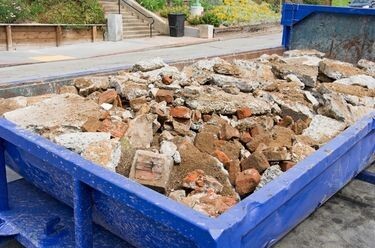
Greening Your Next Renovation Project
Ah, home renovations. Exciting! And expensive! Most home renovation projects produce unwanted material that is either recyclable or reusable. There are ways to dispose of unwanted construction material that keeps those items out of a landfill.
The first thing a homeowner should identify is the primary reason behind the renovation. Is it being done first and foremost to replace things that are damaged or that have otherwise reached the end of their useful lives? If the answer is yes, the project is likely to generate recyclable material, but perhaps not a lot of material that is suitable to donate for reuse. However, projects that are being done for aesthetic or stylistic reasons may yield a lot of unwanted material that is otherwise in good condition and can be donated for reuse. Very large projects, like complete tear-downs or gutting and refinishing, will very likely result in a combination of recyclable and reusable materials.
For projects that replace damaged or end-of-life items, the homeowner and their contractor (if using one) should develop a recycling plan. Depending on the scale of the project, this will either involve renting a roll-off dumpster for construction and demolition debris (CDD) or directly hauling the CDD to a recycling facility.
Kane County's Recycling Program has a list of local businesses that provide these services on its new CDD webpage. It's important that the CDD dumpster, trailer or other container not be contaminated with regular trash. Homeowners should refrain from throwing their household waste into CDD containers, and should provide contractors and laborers with trash and recycling bins for regular waste. If using a waste hauler that doesn't specialize in CDD, it's important to confirm that they will haul uncontaminated CDD to a specialized recycling facility instead of mixing it with municipal waste.
For projects where newer materials or fixtures are being removed, eco-friendliness starts by planning to deconstruct, rather than demolish, salvageable elements. Home improvement television shows often show people attacking things with sledge hammers and crowbars, which is fast and fun (at least for the first five minutes) and makes good TV, but destroys materials past the point of reuse. Deconstruction, on the other hand, involves taking things apart the way they were put together so that they can be used again. Deconstruction takes more time and skill than demolition and therefore costs more, but it is undeniably eco-friendlier.
Locally, there are three Habitat for Humanity ReStore centers that accept donations of home improvement material and certain furniture and appliances in good condition. Closer to Chicago, there are other independent non-profit building material reclamation centers that are open 7 days a week.
It's best to check with each store about item acceptance before loading up and heading over - web links, phone numbers and hours are all up on our Building Material Reuse page. Neighborhood marketplace and “buy nothing" groups on social media may provide an outlet for materials that aren't accepted at donation centers, and of course, there's always garage sale season. For homeowners looking to redesign or redecorate on a tight budget, these sources often have new or near-new materials for pennies on the dollar compared to buying new.

